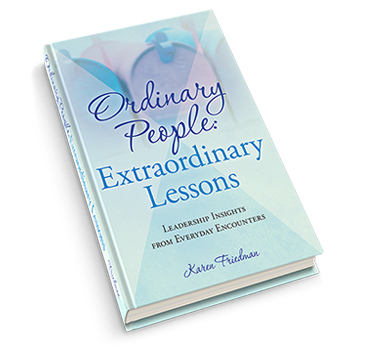We just returned from vacationing in Wyoming. Hiking, biking, rafting and kayaking through Grand Teton mountains and Yellowstone Park. What a great trip!
Everywhere you go, you see bison, also known as buffalo. Like cows here at home, they calmly graze in the meadows, occasionally looking your way. Typically, if you don’t bother them, they won’t bother you. Only in Wyoming, these 2000-pound animals occasionally come down from the hills and out of the meadows to stroll along the side of the road alongside the traffic.
On this particular day, our tour group was on bicycles, single file in a bike lane on a busy road. As we round the corner, we see them in front of us, less than 100 yards away. Not sure what to do, we quickly put on the brakes. Little by little, traffic on both sides of the road also comes to a standstill. Not knowing how these giant animals will react, you can’t exactly drive around them.
As our guide pulled up, I asked, why do they do this, to which he answered because they can. What are you going to do, he joked, negotiate with them?
I thought about it for a minute and answered yes because everything is a negotiation. That doesn’t mean acting foolishly. Like a chess game, it means paying attention, being patient and carefully calculating your next move.
Let me tell you what I learned about negotiating with bison and how you can apply the same protocols in your life.
1. Give them space
Bison Protocol: Be patient and wait for them to cross the road or move ahead. Don’t beep your horn or try to pass them as you might agitate or scare them.
People Protocol: When you are faced with an uncomfortable situation, it’s also important to be patient. That means being comfortable with the silence. Communicating, like negotiating is not always about talking.
2. Don’t underestimate your opponent
Bison Protocol: A bison, despite its enormous size, can run up to 35 mph if it feels like chasing you. It’s estimated the average human jogs at approximately 8 mph. So, it’s not likely you can outrun a bison. If he catches you, the outcome won’t be pretty.
Earlier this year, a man was caught on video being chased by a bison after getting out of his car and taunting the animal as it walked on the side of the road in Yellowstone National park. The man is seen continually teasing the animal until it charged at him. He stopped, and the bison walked away. In July, a woman wasn’t so lucky. She was gored by a bison after she got too close.
People Protocol: Think about the consequences of your words and actions in advance. This will prevent you from acting impulsively or saying whatever comes to mind at the moment. Even a few seconds of thoughtful preparation can help you gain greater control over the conversation.
3. Provide value
Bison Protocol: Writer Ayn Rand said, “a creative man is motivated by the desire to achieve, not by the desire to beat others.” When we put others first, outcomes are often different. Last year, tourists saw a baby bison and thought it was cold, so they picked it up and put it in the car. Unfortunately, when mommy came back, she wanted nothing to do with her baby and left it alone. Park rangers had to euthanize the animal because it would not have survived on its own.
People Protocol: In business, the key to success is the value you provide for others. The people who put the bison in the car may have genuinely been trying to help. Unfortunately, they failed to anticipate reactions, responses and objections. When we do that in business, we are no longer seen as trusted advisors who have the best interest of others at heart.
What’s interesting about the American bison is that they were almost hunted to extinction at the end of the 19th century. Earlier, in the 16th century, tens of millions of buffalo grazed in North America. Because they roam in herds, when one bison is killed, the other bison gather around it, making them easy targets. Public preservation efforts ultimately brought them back, but even today, the United States wild bison population is less than one percent of what it was in pre-colonial times.
Yet, they are survivors. Their resilience and ability to overcome adversity is a great lesson for all of us.
Lesson 1: The bison had a strong support network of people who wanted to save them. People also need to create strong networks to thrive.
Lesson 2: Despite frigid winter temperatures, biting winds and land blanketed in snow, bison find alternative ways to survive. They move to lower elevations, grow a woolly undercoat and eat different vegetation. While most of us don’t have to survive such harsh elements, developing coping skills in different areas of our lives can help us overcome adversity.
Lesson 3: Today, public and private groups actively help identify opportunities and create places where bison can safely thrive in large herds. Continually identifying new opportunities, educating ourselves and seeking solutions to challenges will help us flourish in our own environments.
Even though I kept my distance, I learned a lot from the bison I saw. Their physical endurance, coping skills and ability to adapt through the centuries was truly inspiring and reminded me that anything is possible.








Leave a Reply
You must be logged in to post a comment.